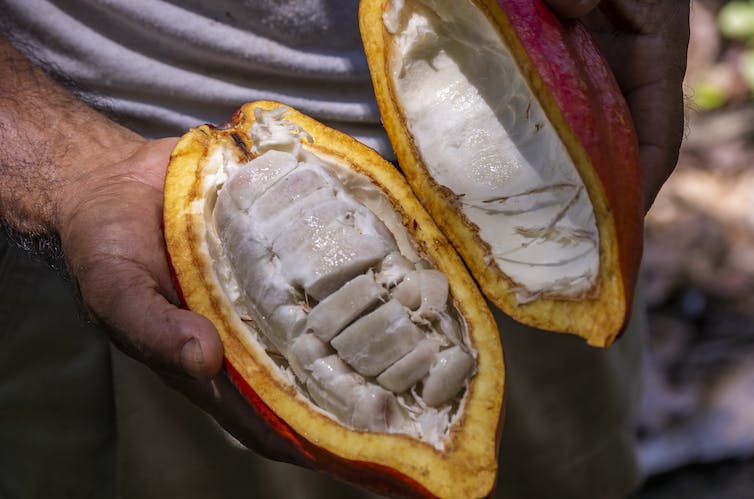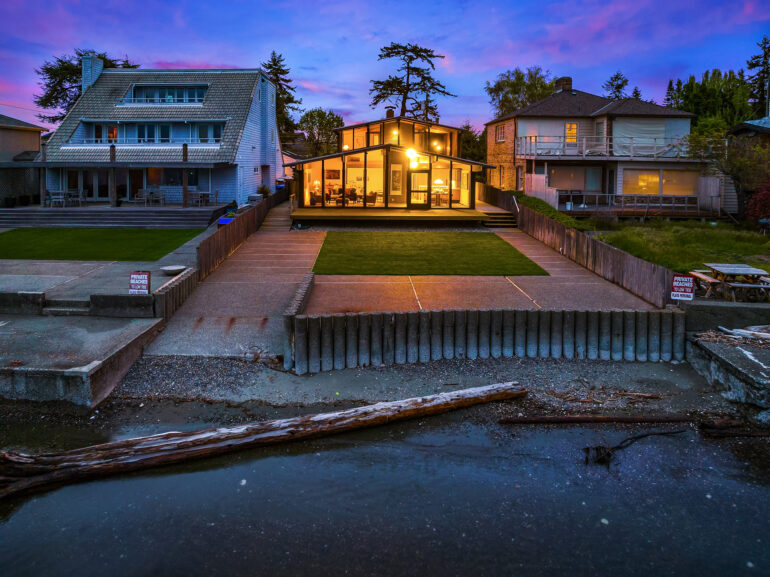Whether it is enjoyed as creamy milk chocolate truffles, baked in a devilishly dark chocolate cake or even poured as hot cocoa, Americans on average consume almost 20 pounds (9 kilograms) of chocolate in a year. People have been enjoying chocolate for at least 4,000 years, starting with Mesoamericans who brewed a drink from the seeds of cacao trees. In the 16th and 17th centuries, both the trees and the beverage spread across the world, and chocolate today is a trillion-dollar global industry.
As a food scientist, I’ve conducted research on the volatile molecules that make chocolate taste good. I also developed and taught a very popular college course on the science of chocolate. Here are the answers to some of the most frequent questions I hear about this unique and complex food.

There’s a lot of processing that happens between cacao beans in a pod and the chocolate at your table.
Gustavo Ramirez/Moment via Getty Images
How does chocolate get its characteristic flavor?
Chocolate starts out as a rather dull-tasting bean, packed into a pod that grows on a cacao tree. Developing the characteristic flavor of chocolate requires two key steps: fermentation and roasting.
Immediately after harvest, the beans are piled under leaves and left to ferment for several days. Bacteria create the chemicals, called precursors, needed for the next step: roasting.
The flavor you know as chocolate is formed during roasting by something chemists call the Maillard reaction. It requires two types of chemicals – sugar and protein – both of which are present in the fermented cacao beans. Roasting brings them together under high heat, which causes the sugar and protein to react and form that wonderful aroma.
Roasting is something of an art form. Different temperatures and times will produce different flavors. If you sample a few chocolate bars on the market, you will quickly realize that some companies roast at a much higher temperature than others. Lower temperatures maximize the floral and fruity notes, while higher temperatures create more caramel and coffee notes. Which is better is really a matter of personal preference.
Interestingly, the Maillard reaction is also what creates the flavor of freshly baked bread, roasted meat and coffee. The similarity between chocolate and coffee may seem fairly obvious, but bread and meat? The reason those foods all smell so different is that the flavor chemicals that get formed depend on the exact types of sugar and protein. Bread and chocolate contain different types, so even if you roasted them in exactly the same manner, you wouldn’t get the same flavor. This specificity is part of the reason it’s so hard to make a good artificial chocolate flavor.
How long can you store chocolate?
Once the beans are roasted, that wonderful aroma has been created. The longer you wait to consume it, the more of the volatile compounds responsible for the smell evaporate and the…
